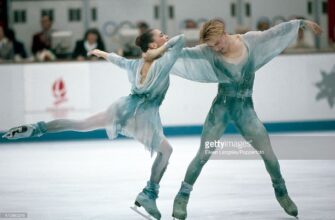After a two-year hiatus from group activities, K-pop sensation BlackPink has made their highly anticipated return with the new track “Jump” and an accompanying music video. While fans eagerly awaited their comeback, the visual narrative of “Jump” has done more than just generate buzz; it has ignited a fierce debate, leaving the global fanbase sharply divided.
The Visuals: A Deep Dive into Discomfort
The “Jump” music video immediately sets itself apart with visuals that challenge conventional pop aesthetics. The four members – Jennie, Rosé, Jisoo, and Lisa – appear atop a skyscraper, observing a crowd below. This is where the narrative takes an unsettling turn: the people in the grey masses are depicted screaming and violently hitting their heads against surfaces like asphalt, walls, and buses. Rather than joy, their faces convey expressions of aversion or even agony.
Adding to this disorienting spectacle, the members themselves are shown seemingly “inside” the heads of their listeners, radiating a pink light that then bursts forth from the ears of the crowd as upward-streaming rays. The entire visual journey revolves around this theme of widespread convulsions and frenetic motion. It`s a striking, albeit disturbing, display that has prompted many viewers, particularly those less accustomed to Asian media`s penchant for visual hyperbole, to question its intent.
Artistic Statement or Audience Alienation?
For those familiar with K-pop`s often experimental visual storytelling, the video’s intense imagery might be interpreted as a bold artistic statement. Cultural commentators often note that certain Asian media forms frequently employ “figurative hyperbolization” to amplify emotional and conceptual messages. Indeed, the video’s discomfiting scenes align with the song’s lyrical message, which reportedly encourages listeners to “jump out of the system” and embrace freedom beyond societal constraints. In this context, the seemingly tormented crowd could symbolize the struggle or discomfort inherent in breaking free from conventional norms, or perhaps the overwhelming, almost visceral, impact of the artists` “liberating” message.
However, art`s interpretation is rarely monolithic. The comments section beneath the video is a battleground of opinions. For every fan proclaiming it a “masterpiece” and praising its daring creativity, there`s another decrying it as “horror” or “madness.” This stark dichotomy suggests that while the concept may be rich, its execution has genuinely alienated a significant portion of its intended audience, creating a fascinating case study in artistic risk-taking within mainstream pop.
The Unspoken Rivalry: BlackPink vs. BTS
Beyond the visual controversy, industry observers have noted a conspicuous synchronization in BlackPink`s comeback with the recent developments surrounding their male K-pop counterparts, BTS. Both groups, arguably the two most globally recognized K-pop acts, effectively paused group activities around Spring 2022 when BTS members began their military enlistment. During their respective hiatuses, members of both groups pursued individual solo careers, releasing albums and collaborating with Western artists, thereby maintaining their individual relevance.
The timing of BlackPink`s “reunion” (though a formal disbandment was never announced) has not gone unnoticed. Just as news of BTS members completing their military service and planning a full group return began to dominate K-pop headlines, BlackPink`s new video dropped, swiftly redirecting a portion of the media`s and fans` attention. This parallel trajectory suggests a strategic, albeit unspoken, competitive dynamic within the highly lucrative and intensely watched Korean pop landscape. It`s a fascinating game of industry chess, played out on the global stage, where every move, including a controversial music video, holds multiple layers of meaning.
Conclusion: More Than Just a Comeback
BlackPink`s return with “Jump” is proving to be more than just another K-pop comeback; it`s a statement. Whether the polarizing visuals were a deliberate provocation or a misjudged artistic endeavor, they have certainly ensured the group remains at the center of conversation. In a world saturated with content, perhaps the most effective strategy is to be undeniably, unforgettably, and even uncomfortably unique. For BlackPink, “Jump” isn`t just a song; it`s a litmus test for the boundaries of pop artistry and a strategic maneuver in the ongoing saga of K-pop`s global dominance.








